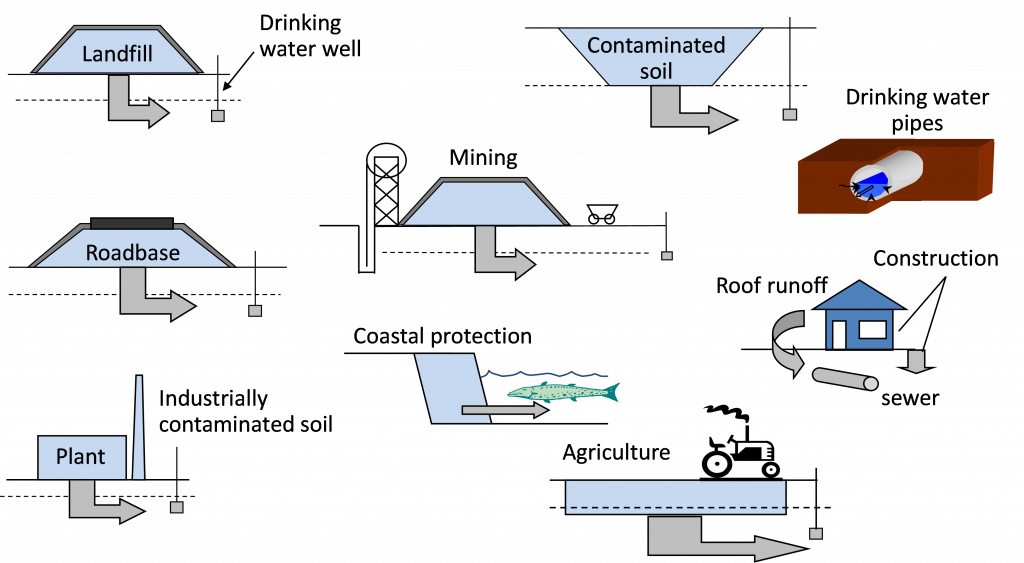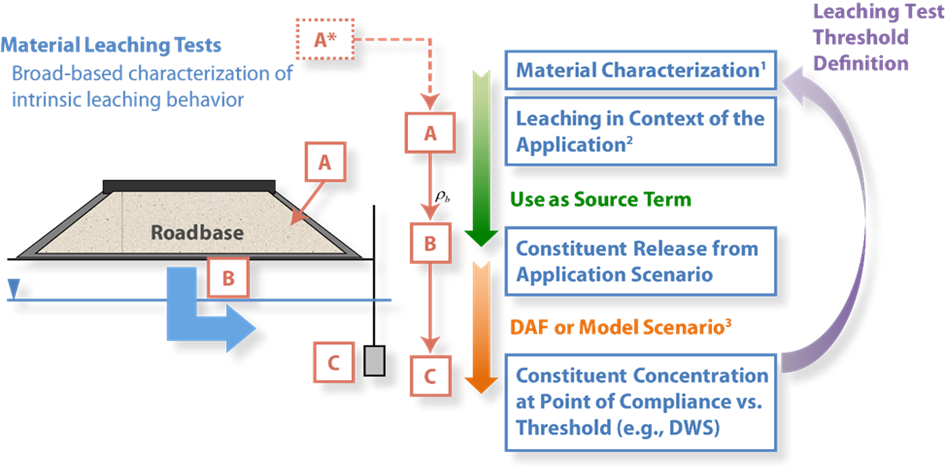There are different scenarios for environmental impact evaluation of disposal and beneficial use scenarios. The basic principle is, however, in all cases very similar. There is a source term defined by the material that is disposed or utilized. There is path to groundwater and on to a point of compliance (POC) at some distance from the disposal site or beneficial use application and a set of criteria to be complied with at the POC. In case of coastal protection and drinkingwater pipes there is direct contact with a water body or a flowing water stream.

Figure 1. Different scenarios of environmental impact.
Leaching tests provide the first step of this sequence: the source term. In the development of the EU Landfill Directive percolation tests were used to describe the source term under the assumption that such a test would reflect leaching over a period of about 100 years. The evaluation of a beneficial use application like a road base material follows a similar approach [Dutch Soil quality Decree, 1995]. This similarity in approach is illustrated in figure 2. Aspects that vary may be the infiltration rate, the nature of the underlying soil, the distance to groundwater, the criteria to be applied (drinkingwater quality objectives, groundwater quality criteria, surface water quality, …). In an iterative approach of matching release by element with such criteria tolerance values can be derived per element to meet the criteria at POC. Often uncertainties in the overall process and additional aspects may lead to deviations from modelling in reaching regulatory criteria adopted by governments.

Figure 2. Similar approach for different scenarios.
Modelling of the release of substances can be distinguished in empirical descriptions using curve fitting techniques of experimental data, very simplistic Kd type of assessments (often which misrepresent underlying processes and phenomena), semi-empirical calculations that reflect a limited set of controlling processes (useful for screening or bounding assessments), and full mechanistic chemical reaction transport modelling (useful for detailed assessments). When overly simplistic empirical relations or Kd’s are used, there are serious limitations if information is needed beyond the range of conditions from which the relations were derived or if constituent interactions occur, which are not accounted for. In case of full mechanistic modelling, the chances of proper prediction increase significantly provided the important release controlling processes are covered. In all cases and approaches, underlying data and model uncertainties should be clearly presented.
Regulatory approaches
Uncertainty
Treatment evaluation
Laboratory – Field comparison
Waste classification